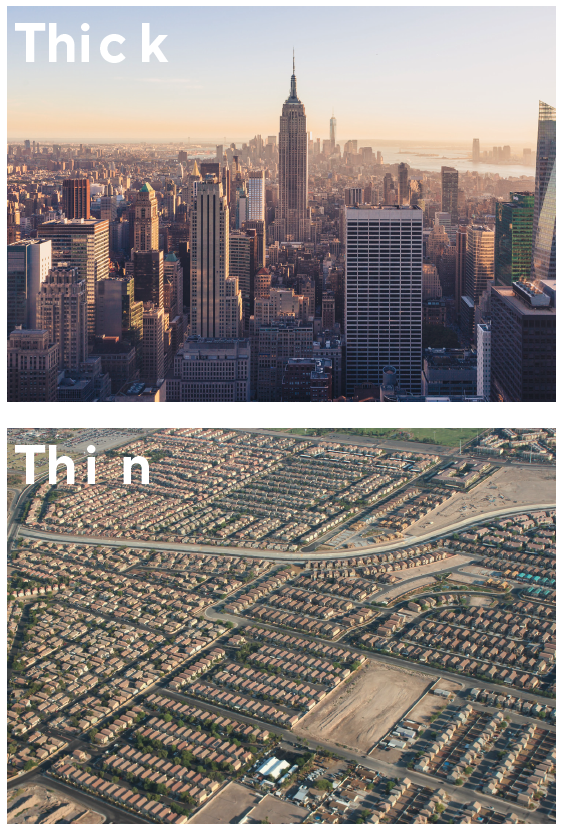
What are Thin Cities and Thick Cities?
In my book Near To Far, I use the term “thick” cities to refer to densely populated urban areas, such as downtown New York City. “Thin” cities refer to smaller towns and low-density suburban areas that typically span out for many miles around urban centers.
In a typical “thick city,” it’s relatively easy to opt against car ownership. Several transportation options are already available to you within walking distance, and there are numerous modes of transportation to choose from (subway, taxi, scooter, and so on).
By contrast, residents in “thin city” areas are typically dependent on owning a highway-capable car for transportation. Public transportation options like buses or trains encounter common problems of low usage, in part due to struggle to address first and last mile issues.
Ironically, most sustainability-oriented planning firms in the U.S. are focused on designing for thick cities—when in reality it is the sprawling, sparsely populated suburbs that desperately need help.
Why We Focus on Thin Cities First
At Mobilitee, we’re working to transform mobility in America — starting with the places that need it most: our thin cities. Around 210 million Americans live in thin city areas, compared to just 90 million in thick cities. People in thin cities tend to have nearly double the carbon footprint of those in thick cities, largely due to driving, less efficient housing, and urban form.
But with today’s mobility innovations — from micro-EVs, neighborhood electric vehicles, new robotaxis to smart mobility hubs and better planning tools — we now have the tools and tech to give people real alternatives to car dependency, even in more spread-out areas.
We see this challenge like taking down the big guy in the alley—the one who’s surrounded by troublemakers. If we can transform transportation in the harder places, the rest will follow. Reducing car dependency in thin cities not only helps those communities—it will also ease the pressure on thick cities, reducing the daily inflow of vehicles and making car-free living even more feasible there.
Our goal isn’t just better transportation. We know that transportation design affects all aspects of life—from the time we save, to the fitness we gain, to the interactions we have, to the jobs we can access. Our goal underpinning this work is to improve the lives of Americans everywhere, no matter where they may reside.
